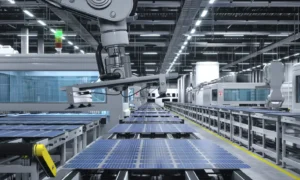We are at a critical juncture when it comes to sustainability. Due to fossil fuels, climate change causes severe weather events, rising sea levels, and significant biodiversity loss. Global temperatures have risen by approximately 1.5 degrees Celsius since pre-industrial times. At the current rate, we are on track to it within the next few decades if drastic measures are not taken.
Consuming energy is a significant contributor to greenhouse gas emissions. The International Energy Agency (IEA) noted that energy production and use account for 75 percent of global emissions. This percentage highlights the urgent need to transition to renewable energy sources. Among them, solar power stands out due to its vast potential and declining costs. As such, it’s a key player in fighting climate change.
The Promise and Challenge of Solar Power
Solar power harnesses energy from the sun—a virtually limitless resource. Over the past decade, advancements in photovoltaic (PV) technology have minimized the cost of solar panels. Reports show solar PV module costs have dropped by 85 percent since 2010. This dramatic decrease made solar power accessible to more consumers, from homeowners to large-scale industrial users.
Despite these advancements, some find solar power inaccessible due to high initial installation costs and lack of suitable roof space. The upfront investment for purchasing and installing solar panels can be a significant barrier, even though the long-term savings are substantial.
How do we address this challenge? One possible solution is leveraging solar buyback programs.
Solar buyback programs provide a financial incentive for installing solar panels. Users can sell excess energy generated to the grid, offsetting their initial investment. Think of it as having a passive income source while also helping the environment.
The Mechanism of Solar Buyback Programs
Here’s how solar buyback programs work:
Solar energy generation
Solar panels absorb and convert the heat from the sun into usable electricity using photovoltaic (PV) cells. When sunlight hits these cells, it excites electrons, generating direct current (DC) electricity. An inverter then converts this DC electricity into alternating current (AC), which powers homes and businesses.
Net metering
Net metering is a crucial factor in solar buyback programs. It involves a bidirectional meter that measures the electricity consumed from the grid. The excess electricity the solar panels generate is sent back to the grid. The surplus goes back to the grid when the solar panels generate more power than needed. The user then receives credits on their utility bill.
Feed-in tariffs (FiTs)
In some regions, feed-in tariffs (FiTs) are used instead of or alongside net metering. Under FiTs, the electricity generated by solar panels is sold to the utility at a predetermined rate. Often, this is higher than the retail electricity rate. This provides more financial incentives for installing solar panels.
Benefits of Solar Buyback
What can you get from joining solar buyback programs? Let’s explore some of them:
Reduce energy bills
One of the main benefits of solar buyback programs is reducing energy bills. Residents generate their electricity, reducing their reliance on grid electricity and lowering energy costs. The credits earned through net metering can further offset these costs.
Investing in solar panels can bring significant returns on investment. The upfront installation cost is offset by the long-term savings on energy bills and the income generated from selling excess electric power back to the grid. Many states offer tax incentives and rebates to reduce the upfront costs. In Texas, for example, residents can get a 30 percent solar investment tax credit.
Minimal carbon footprint
Fossil fuels cause environmental degradation. Solar energy lessens reliance on the grid. By participating in solar buyback programs, users contribute to reducing greenhouse gas emissions and their overall carbon footprint.
Promotes sustainable energy
Solar buyback programs promote the adoption of sustainable energy practices. With increased participation, the demand for renewable energy increases, leading to further advancements and investments in solar technology.
Future of Solar Buyback Programs
Advancements in solar tech will enhance the effectiveness of solar buyback programs. These innovations will make solar energy more accessible and cost-efficient for a broader range of consumers.
With more organizations recognizing the importance of renewable energy, supportive policies and incentives will likely emerge. These developments will further encourage the adoption of solar energy and participation in solar buyback programs.
Explore Solar Buyback Programs for a Sustainable Future
Solar buyback programs offer a practical and financially beneficial way to promote renewable energy and contribute to a better environment. While the initial costs may be high, the long-term benefits will reward you with more cost savings and a brighter future.
If you’re ready to take a step toward sustainability and energy efficiency, explore the options for participating in solar buyback programs.
Learn how you can benefit from solar buyback programs and how Energy Texas can transform electricity in Texas.



































